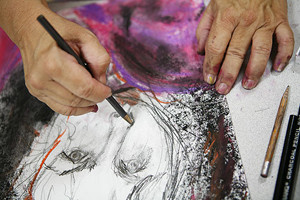 One of the difficulties in addressing emotional and physiological issues is finding an appropriate therapy; art therapy is universal. It involves providing art tools or media to clients and asking them to produce artwork through which they deal with emotions and work through issues. Creative arts therapy may also involve dance and other arts.
One of the difficulties in addressing emotional and physiological issues is finding an appropriate therapy; art therapy is universal. It involves providing art tools or media to clients and asking them to produce artwork through which they deal with emotions and work through issues. Creative arts therapy may also involve dance and other arts.
Who Uses this Therapy?
If you are asking who implements the therapy, the answer is trained therapists. Licensed art therapists must have a minimum of a master’s degree. In addition, most programs require the therapist to take courses in psychology and in studio arts.
If, by the question, you mean to ask who the therapy helps, the answer is that it addresses many problems for many age groups. Art involves the right side of the brain which is the place where visual memories are stored. That means children who do not have language skills can communicate emotions and fears using images. Managers often use the services of an art therapist to help employees cope with extremely stressful jobs. It is used in addictions treatment, with eating disorders, with people who have learning disabilities and by people who battle chronic and disabling pain.
How is it Used?
Because art transcends the need for language, very young children can communicate their fears and issues through art interpreted by a trained therapist. This works much the same way as play therapy. The use of colors and shapes, bold strokes and fine lines among other techniques can give clients insight into their deep feelings. The idea of art therapy originated in 1940 with Margaret Naumberg, who had her clients draw their dreams. Today, therapists use three techniques depending upon their clients’ abilities and understanding.
- Active Imagination Therapy: Influenced by Carl Jung, the client is encouraged to do free association while producing the art and the words or images that come to mind are explored.
- Gestalt Art Therapeutic Techniques: Clients use the art along with language to interpret the world and their environments, and to problem-solve issues.
- Third Hand: Therapists assist the client in producing the art by helping them develop images and work with the mechanics of the media. In this way, clients and therapists forge relationships that facilitate therapy.
Art also can be used to treat chronic pain, which is often seen as the result of social interactions and physical and psychological factors. Because this is a complex problem, it must be addressed by more than one kind of therapy. Physical problems may cause the pain, but the extent of the pain and its management are highly subjective. Using therapeutic art can help pain sufferers gain insight into attitudes and emotions that can help them manage their behaviors. The same is true for people with substance and behavioral addictions.
Although this is a new science, the research is compelling and study results have been favorable. The challenge is to remember that it is a therapy that must be utilized by people with significant psychological knowledge and interpretive skills. Although all states do not offer licensure to art therapists yet, several do and the educational benchmark is set at a master’s degree in psychology and in studio arts. Art therapy is becoming a valued and a standard tool for many therapists.




